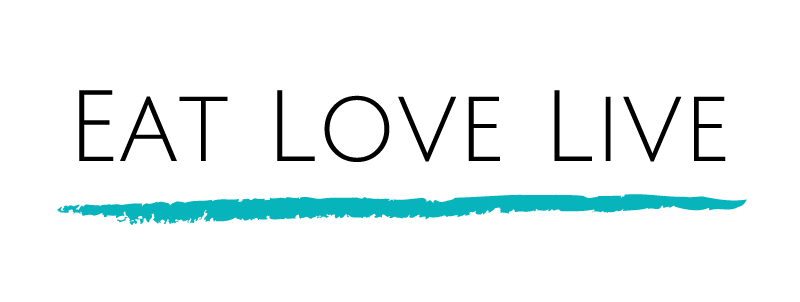We hear constant chatter about ‘healthy eating’, making the ‘right’ choice, doing the ‘right’ thing. Food talk is normalised amongst peers; comparing the latest titbits of information. But how do we know when we are making a choice from a ‘healthy’ place and when it is coming from somewhere more sinister?
*We use the words health/healthy with the knowledge that health is a construct determined by many factors – some we can control and many we can't. Health is different for each individual and is not a moral obligation. We refer to health/healthy as making a decision to include something in your diet with the intention of improving your mental and/or physical health.
You may have chosen to make some different food choices in your diet as you wanted to feel physically or mentally better; or to prevent ill-health. In most cases, ‘healthy eating’ starts out from an honest place of self-care.
Unfortunately, much of the so-called ‘healthy eating’ advice dished out in today’s society is shared by well-meaning, but poorly informed individuals who are deeply entrenched in diet and wellness culture. Nutrition is complex and nuanced and this is not captured in an Instagram tile or Tik Tok video clip. What is healthy for one person may not be for another; or may be unrealistic or unachievable.
And to make matters worse, we live in a culture where disordered eating behaviours are not only normalised, but often times celebrated!
Why is this a problem, you may ask?
Because diet culture, among many other of its other heinous acts, promotes an unhealthy obsession with food; whether it’s ‘good’ or ‘bad’, ‘healthy’ or ‘unhealthy’, ‘organic’ or ‘full of pesticides’. It forces you to reduce and eliminate entire food groups, only eat in certain parts of the day and skip entire meals, all in the name of ‘health’.
Basically, diet culture inherently creates a restriction mentality and encourages extreme pre-occupation with food, both of which are well-established characteristics of disordered eating.
This restriction mentality often manifests itself in the form of food rules, that is any decision about food that is based on external factors, rather than your internal cues. Usually, these rules are related to the timing, frequency, amount, setting, or some other condition in which one does or doesn’t allow themselves to eat. A main feature of food rules is that they do not always align with what you want, but with what you feel you ‘should’ be doing. That pesky ‘should’ is more often than not indoctrinated by, you guessed it, diet culture!
Examples of food rules
- ‘I don’t eat any processed foods’
- ‘I don’t eat [insert food or nutrient] because it’s bad for your health’
- ‘I try not to eat after [insert time] o’clock’
- ‘Since I already ate [insert food] I can’t also eat [insert food]’
- ‘On days when I exercise, I can have [insert ‘forbidden’ food]’
These kind of food rules often hide behind the illusion of ‘health’, and you may even find yourself calling these food rules ‘healthy eating’. But is it really health-promoting if it’s rooted in fear, guilt and restriction?
In contrast, food preferences are choices that we make based on internal body cues and desires like what you enjoy most, find most satisfying and feel best eating. The decision comes from within you, rather than an external set of rules.
Examples of food preferences
- Having protein at most meals because it helps you feel satisfied
- Choosing sweet potato over white potato because you like the sweeter flavour
- Having breakfast before coffee to prevent (the dreaded) caffeine jitters
- Including fruit with breakfast because it’s sweet and fresh and pairs well with yoghurt
- Excluding nuts from brownies because you don’t like the texture or taste
Again, there is no ‘right’ or ‘wrong’ here; that would be black and white thinking that the diet industry profits off. There is nuance to this conversation, it is possible to have a food rule that serves you that is also ‘health-promoting’, without being tainted by restriction or diet culture. A common example is avoiding certain nuts if you have a known pre-existing allergy. In this case, following the food rule is an act of self-care and crucial for your health and well-being.
At the end of the day, it all comes down to your ‘why’. Why do you want (or not want) to eat this way/this certain food?
Is it a food rule or a food preference?
Some efforts are just that- healthy. However, most of the time our food choices are guided by both our own food preferences as well as the food rules diet culture imposes.
To start determining whether your ‘healthy eating’ food choices are actually disordered eating in disguise, ask yourself the following four questions:
- Is your food choice flexible or rigid?
- Would you feel anxious, fearful or guilty if you made a different choice?
- If you knew the food choice would have no effect on your body weight, size or shape, would you still make the same decision?
- Does this eating pattern allow you to make flexible and spontaneous food choices in social situations?
You may then ask yourself a follow-up question; does this food choice negatively impact me?
If the answer is yes, I invite you to consider where this food rule originated and whether it still serves you.
Food rules are one common sign of disordered eating, but they’re certainly not the only sign you may notice in yourself or a loved one.
It’s important to note that signs and symptoms of disordered eating and eating disorders can present differently in each person, and you simply cannot tell if someone has an eating disorder based on their appearance. Eating disorders don’t discriminate across the body weight and size spectrum, race, ethnicity, gender or sexuality, however below are some common patterns you may notice;
Common signs and symptoms of disordered eating
Emotional and behavioural signs
- Frequent dieting
- Preoccupation with food, dieting, calories and weight to the point that eating (or the lack thereof) becomes a primary concern over other activities
- Withdrawal from social eating activities
- Refusal to eat certain foods
- Elimination of entire food groups
- Extreme concern with body size, weight and shape
- Appears uncomfortable/distressed eating around others
- Skipping meals or eating small portions of food at meals
- Frequent body checking
- Performing specific food rituals
Physical signs
- Significant fluctuations in weight
- Fatigue and dizziness, particularly upon standing
- Muscle weakness
- Menstrual irregularities
- Stomach cramps, pain and other gastrointestinal complaints (acid reflux, constipation etc.)
- Fainting
- Feeling cold all the time
- Concentration difficulties
- Abnormal laboratory findings (e.g. anaemia, low potassium, low white and red blood cell count, low thyroid and hormone levels)
- Acid-related dental problems, including erosion of tooth enamel and cavities
- Changes in skin and hair (i.e. becoming drier and brittle)
Need more support?
If you are reading this and concerned that yourself or a loved one may be experiencing disordered eating, know that help and support is available. We encourage you to reach out to a health professional, whether it’s your GP, dietitian or psychologist or another trusted person and express your concerns.
To help find health professional with additional training in eating disorders search:
Connect.ed; professionals Credentialed in Eating disorders
National Eating Disorders Collaboration NEDC

